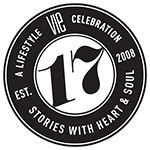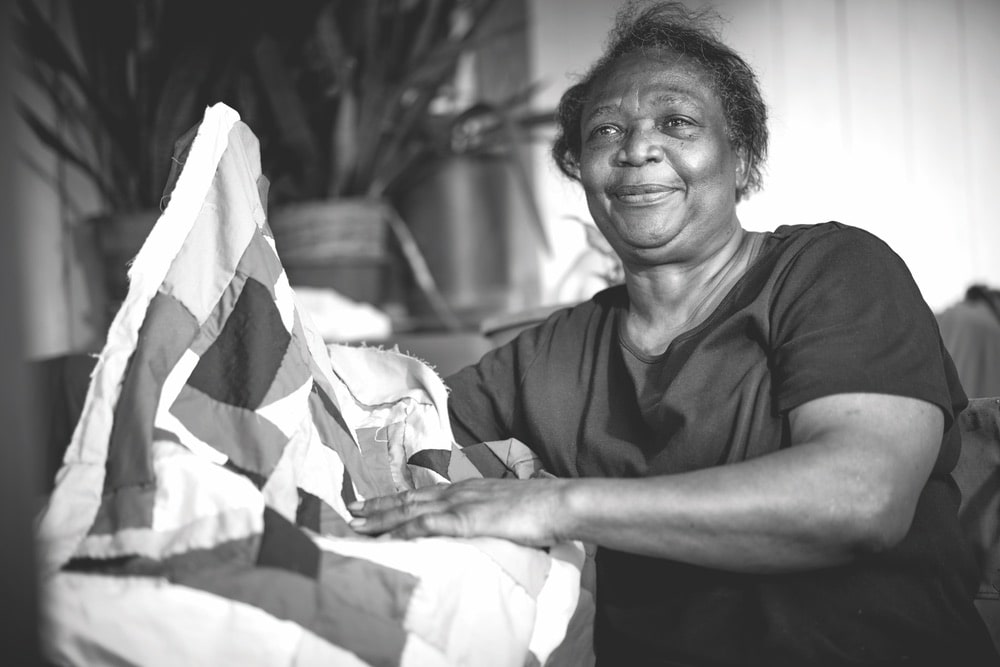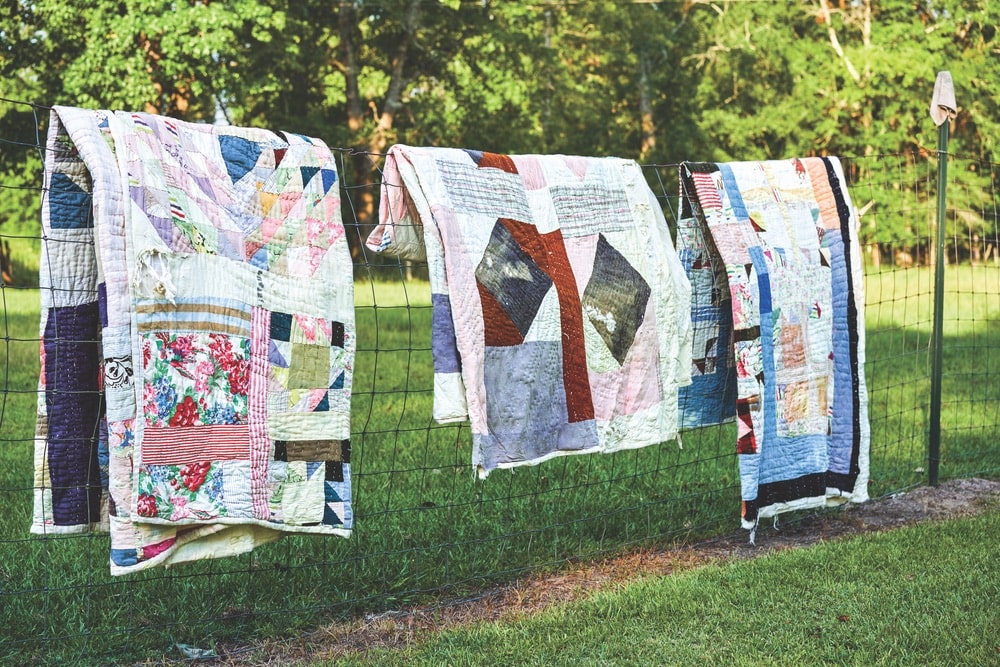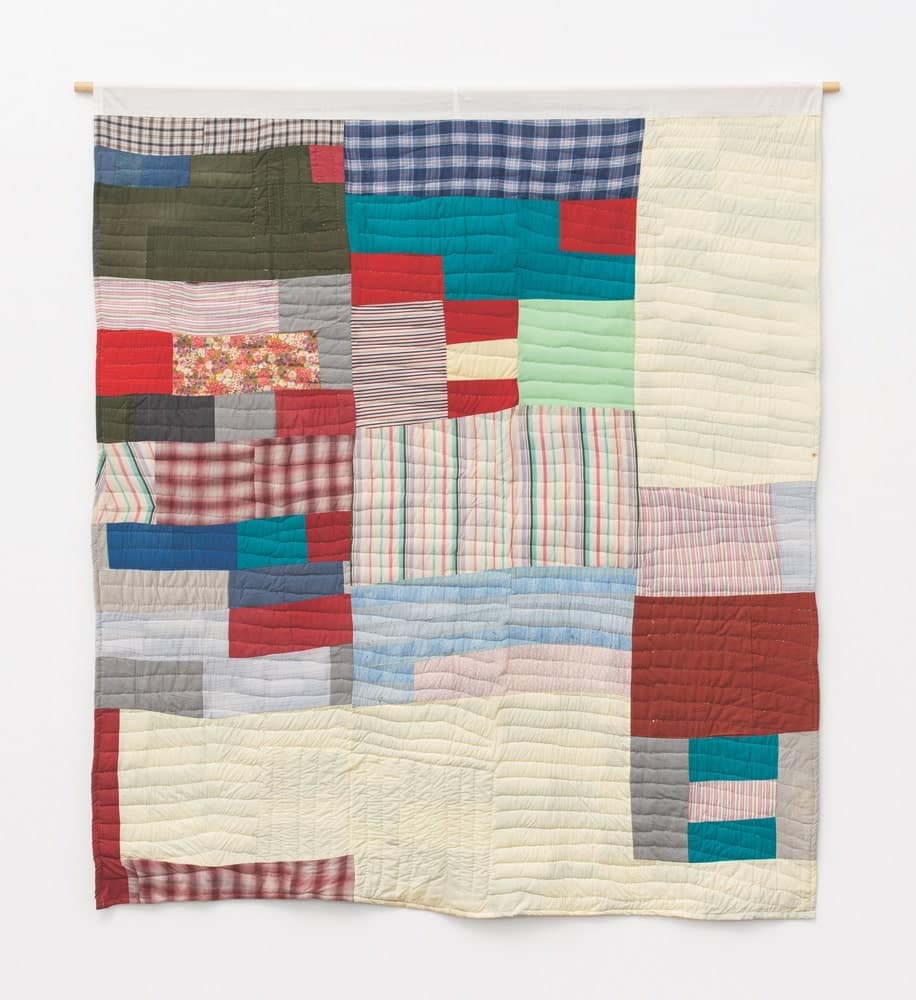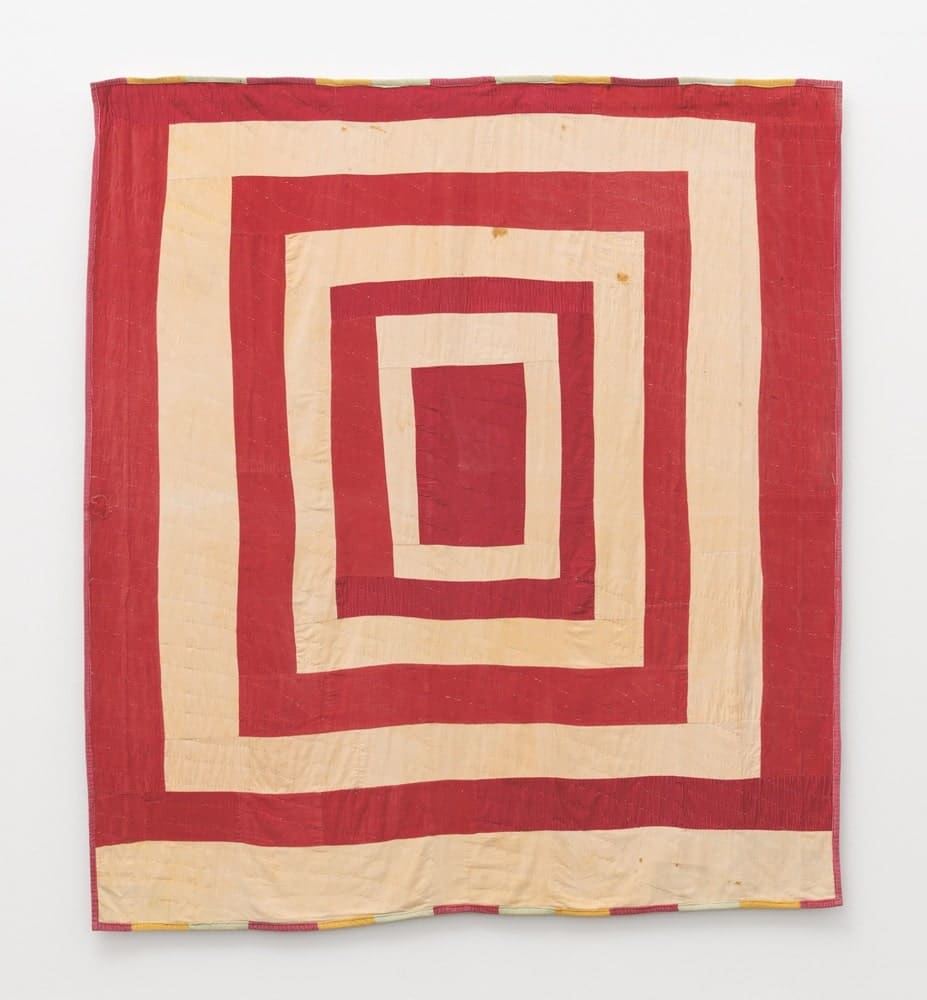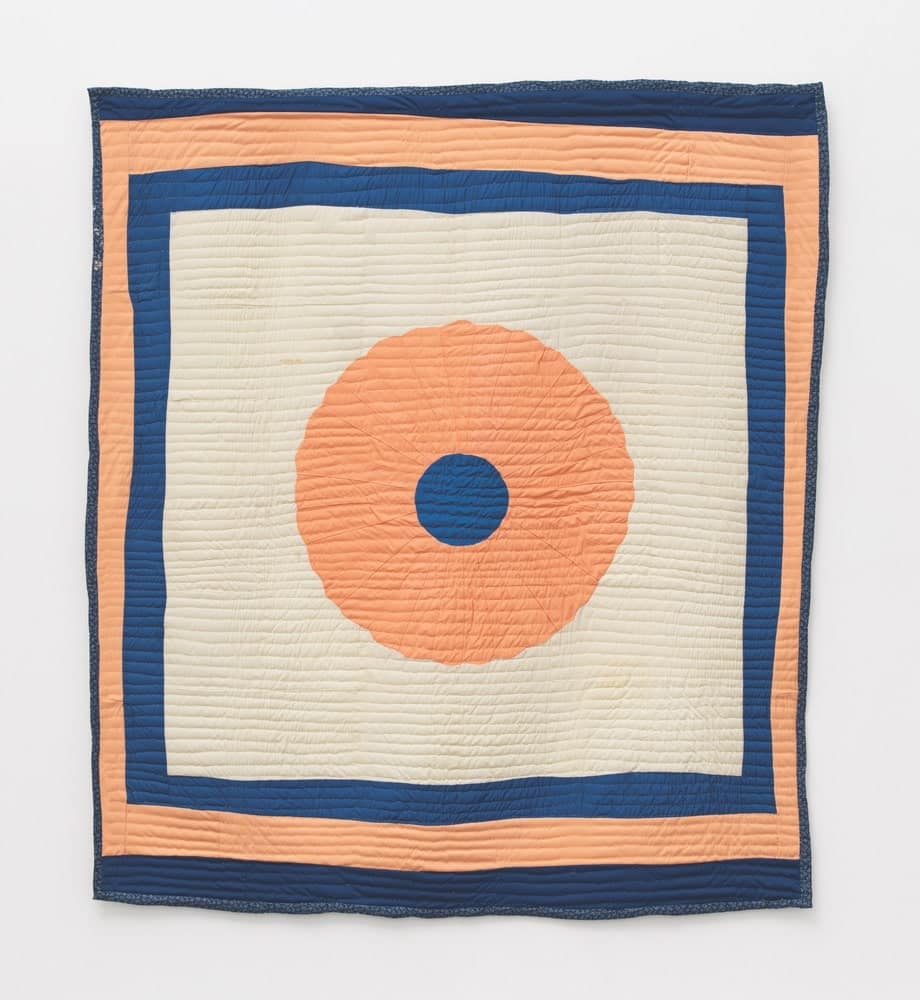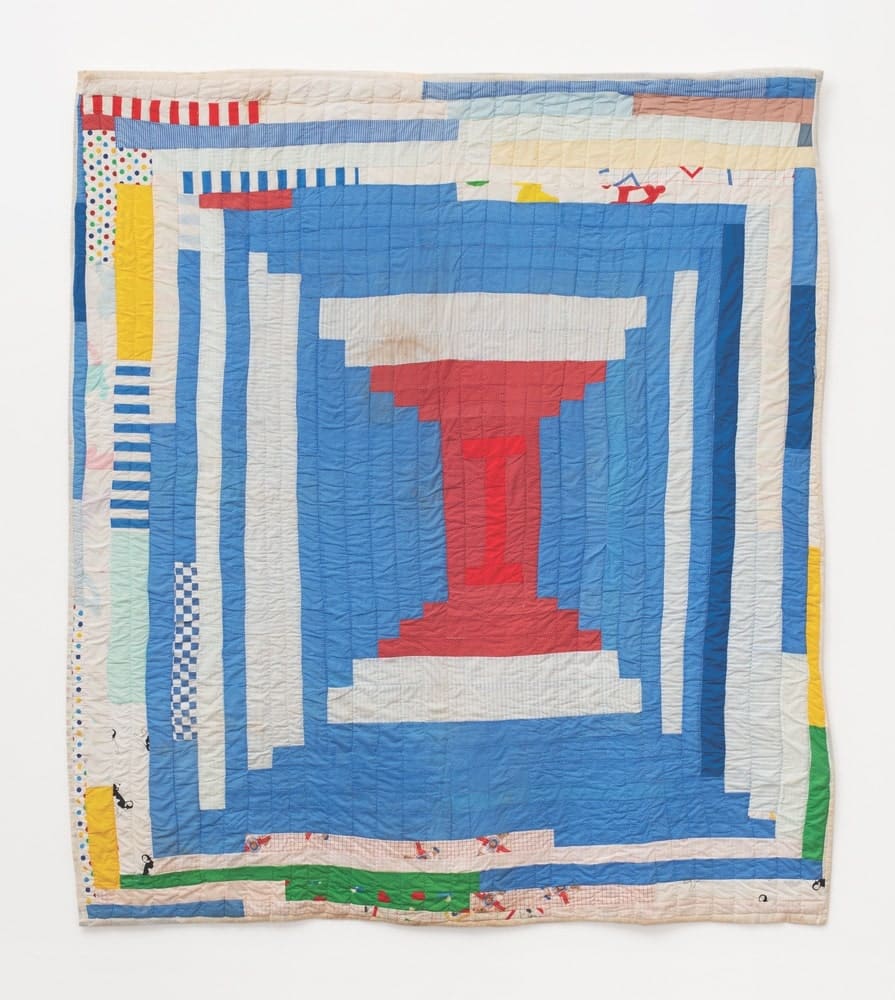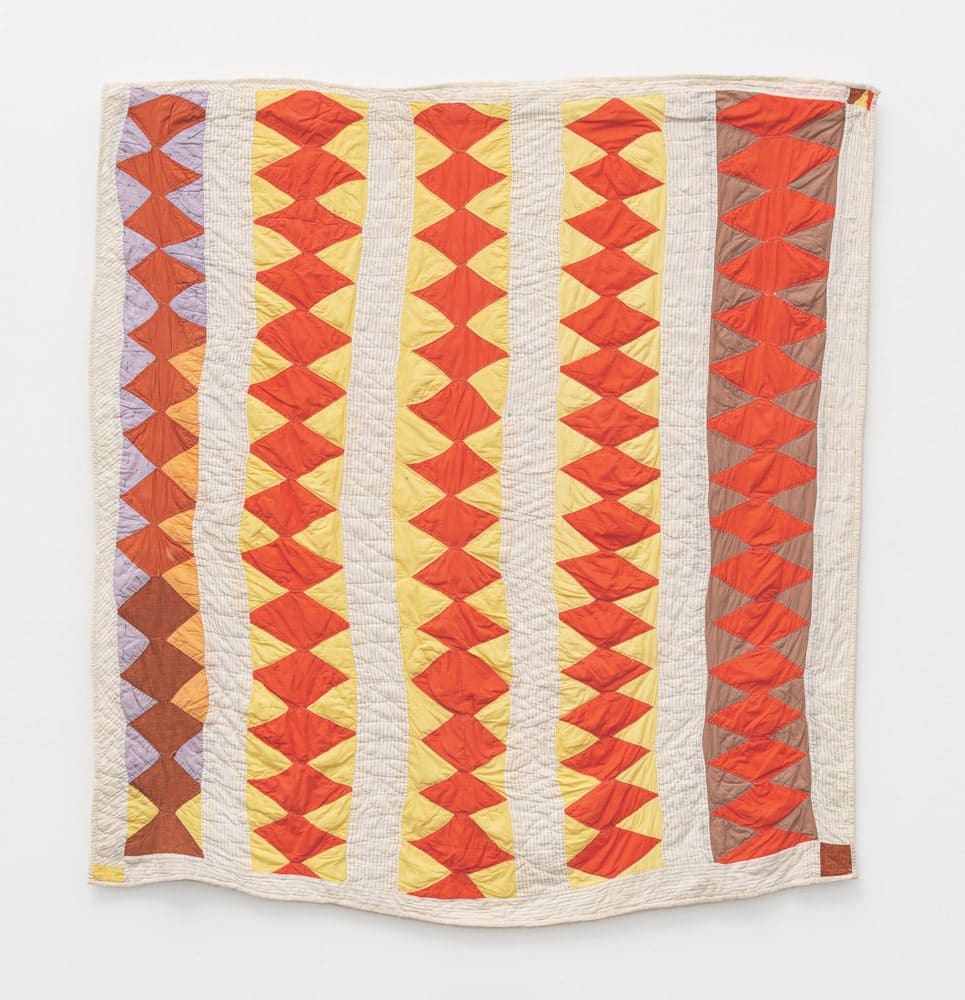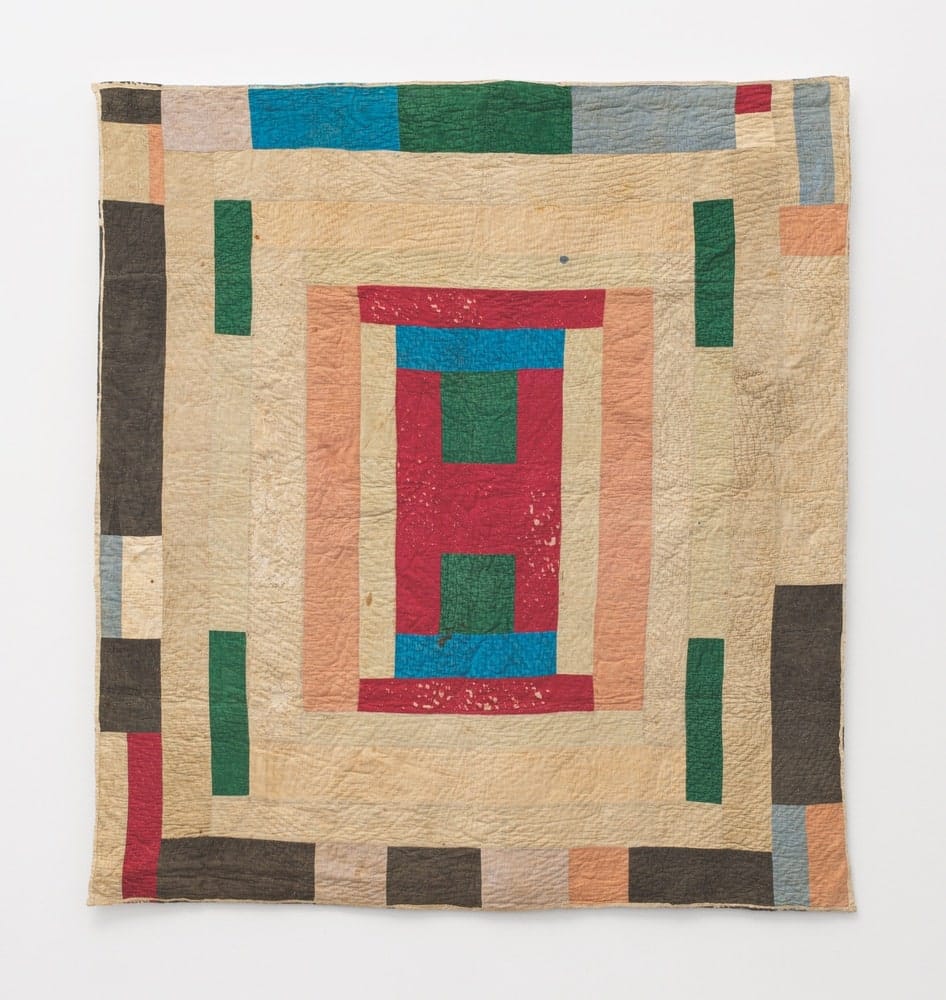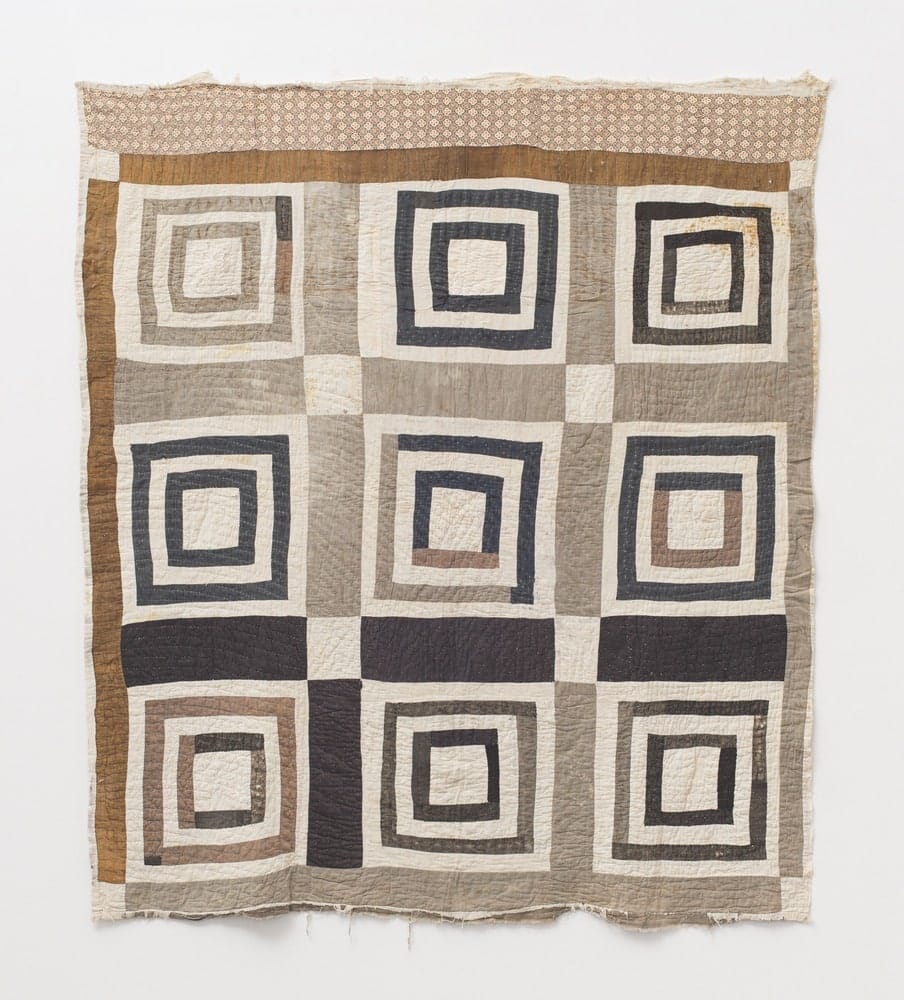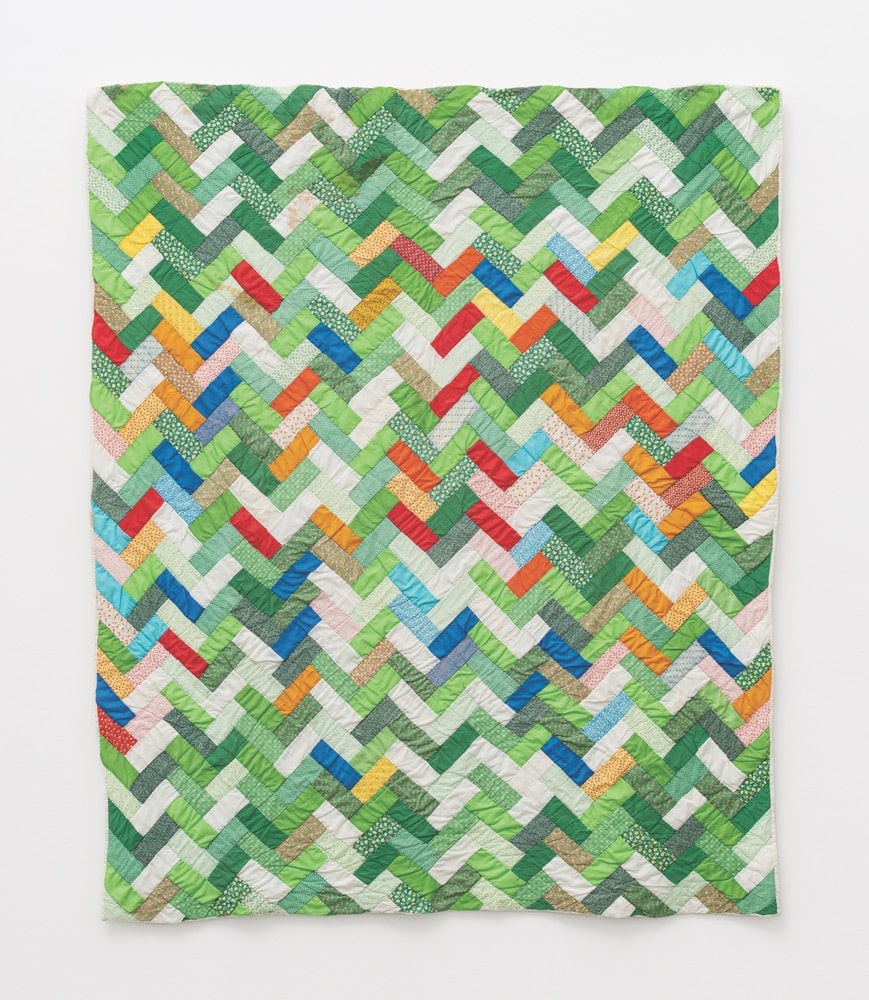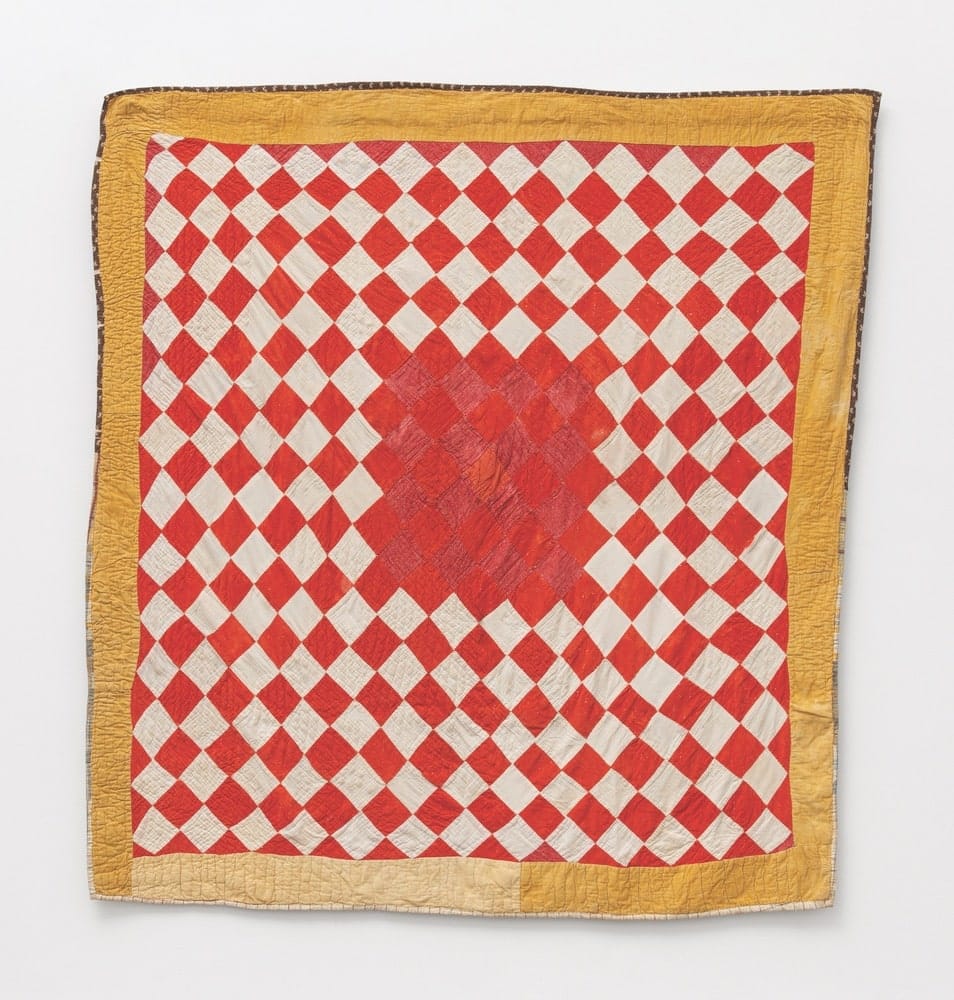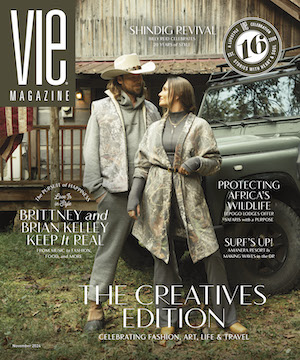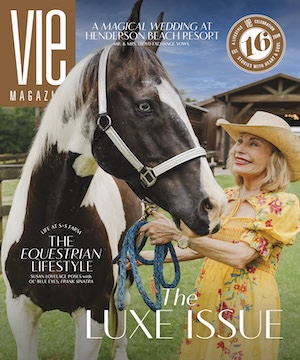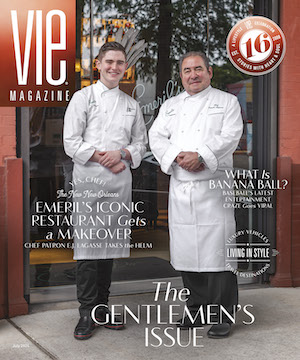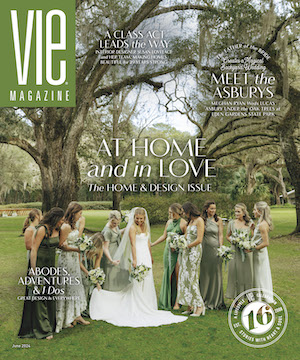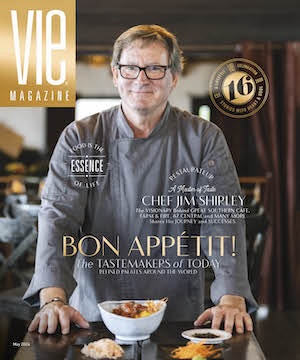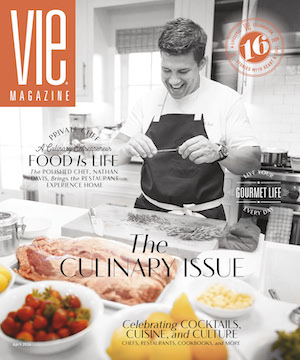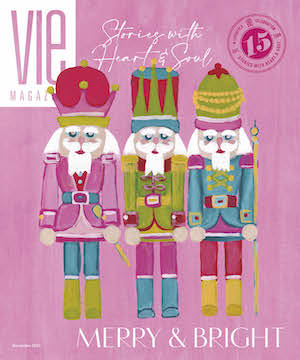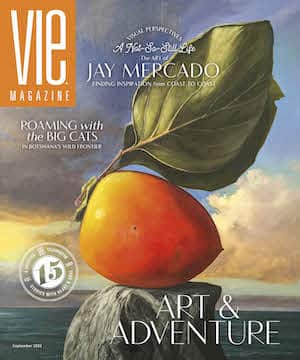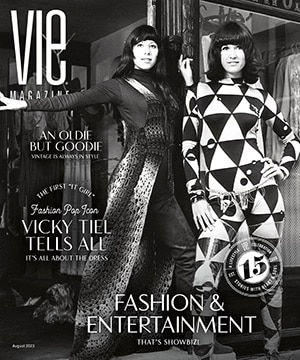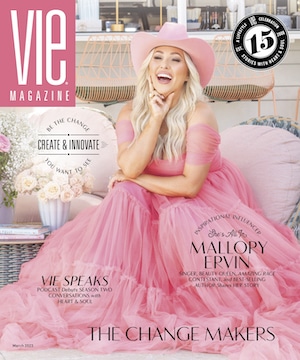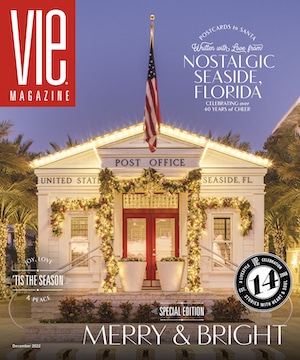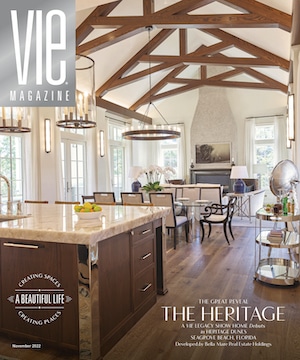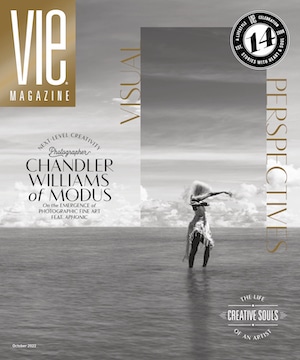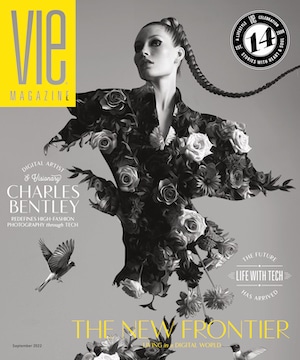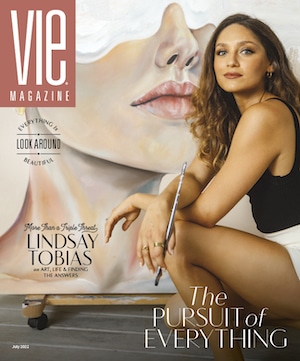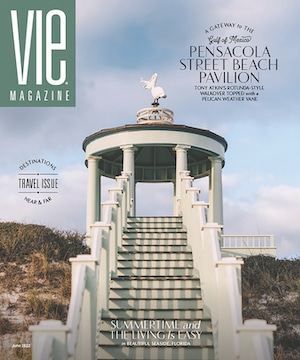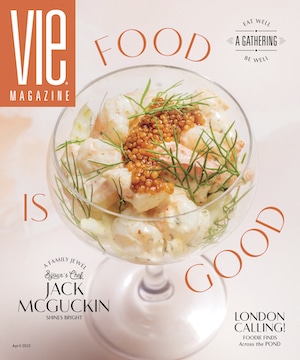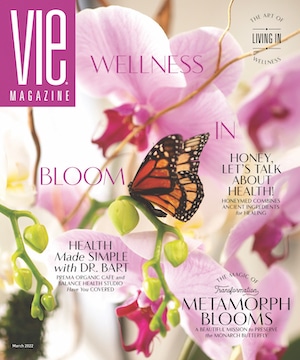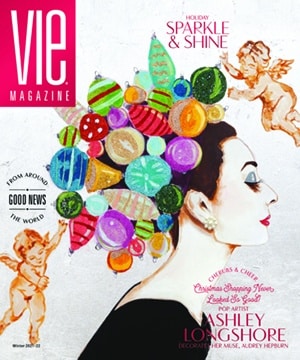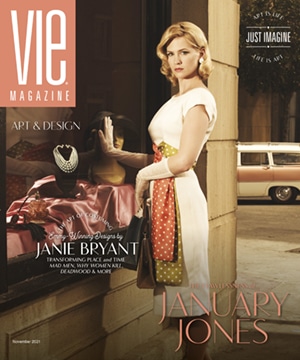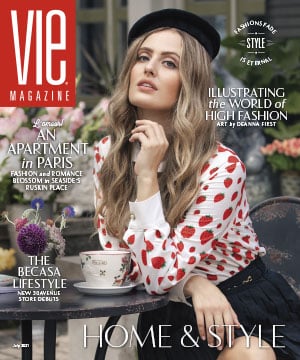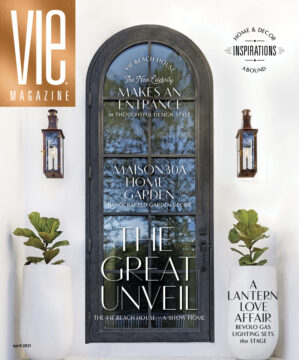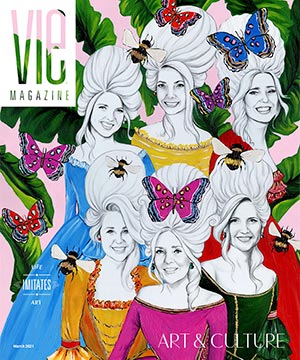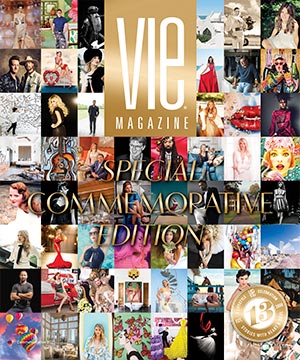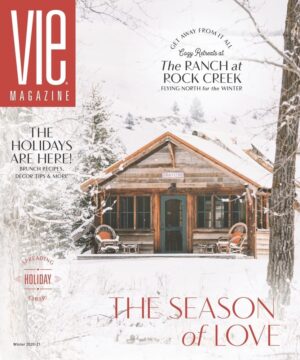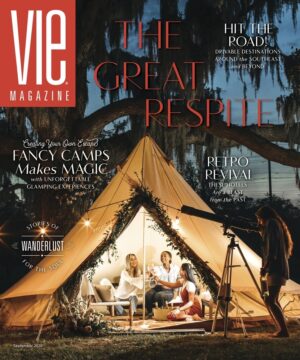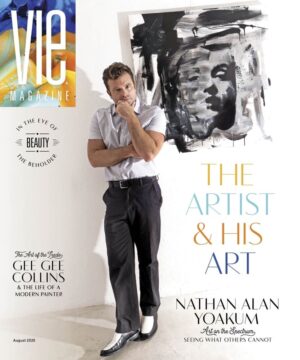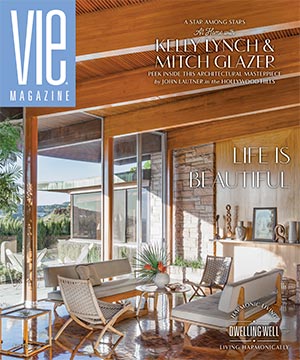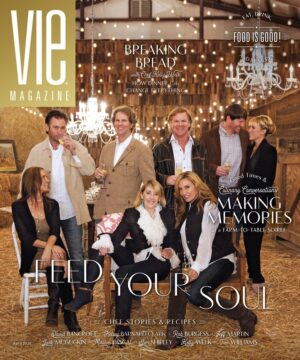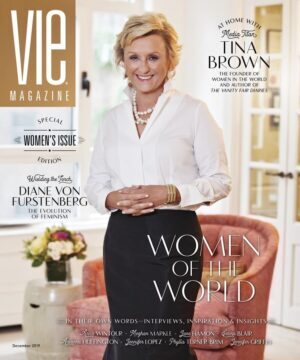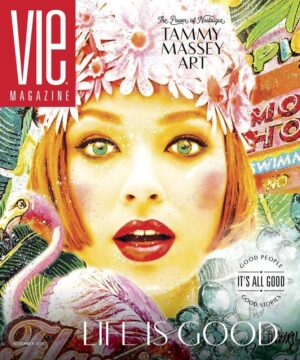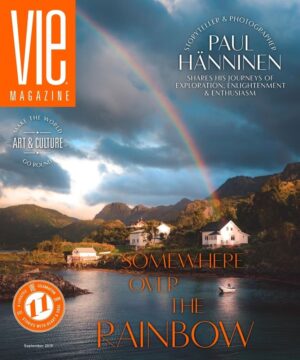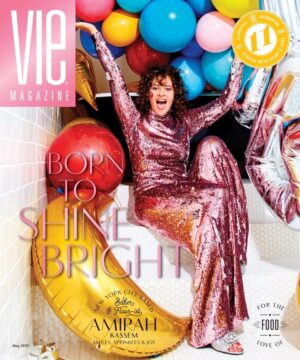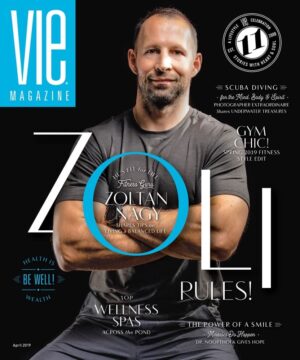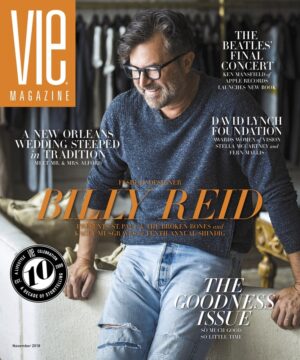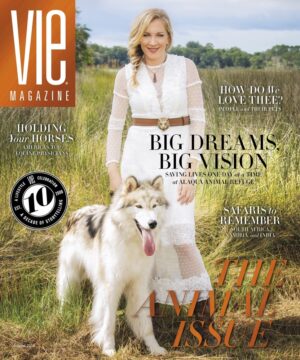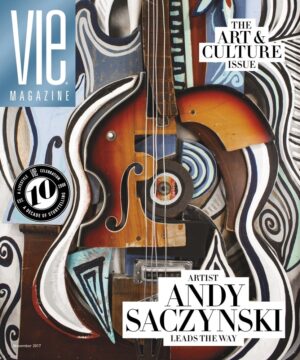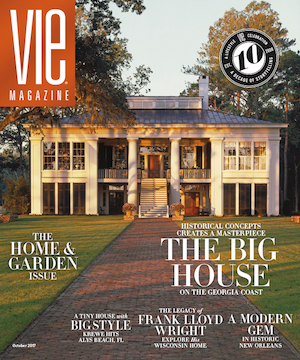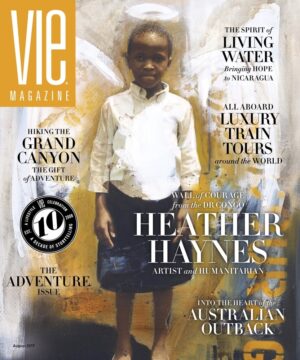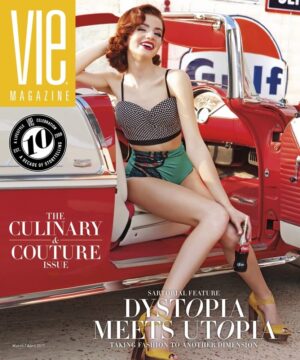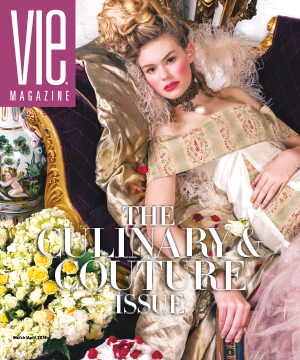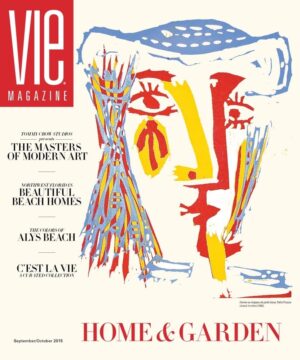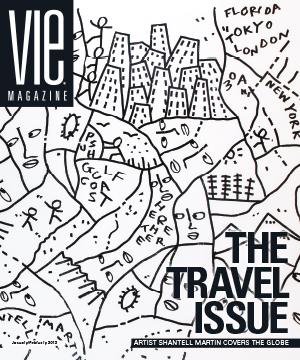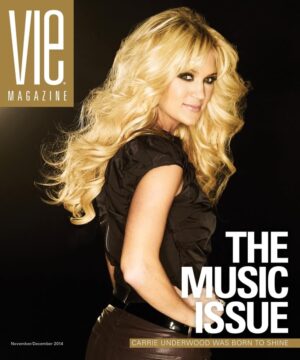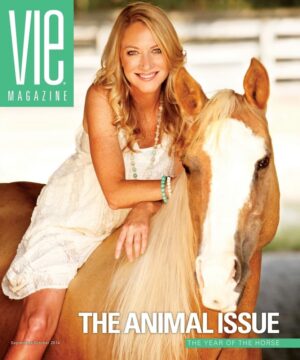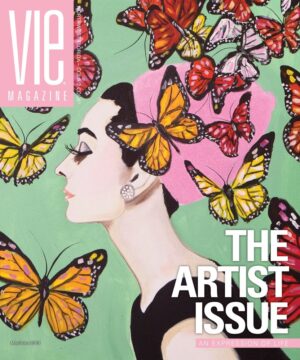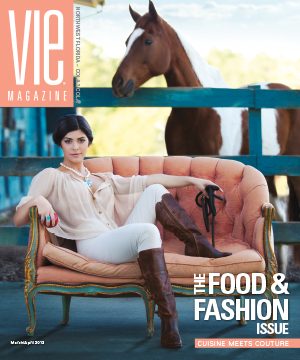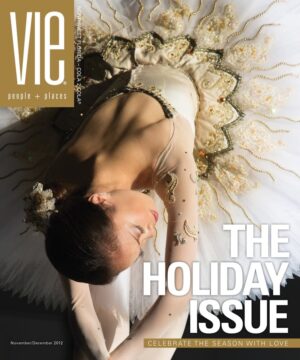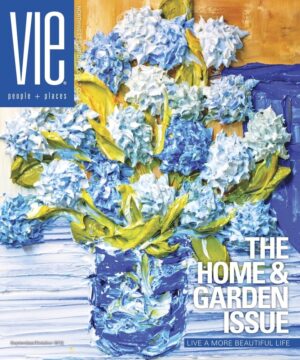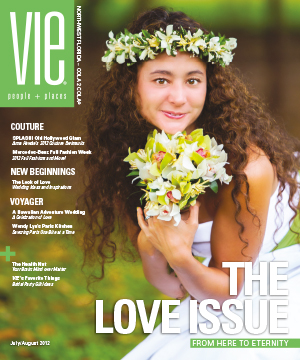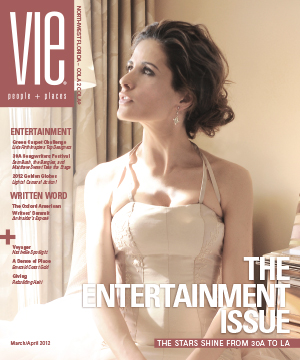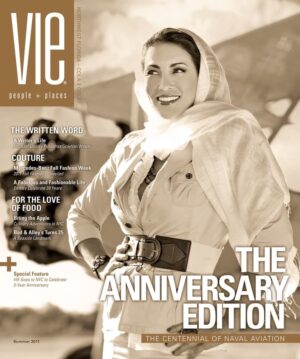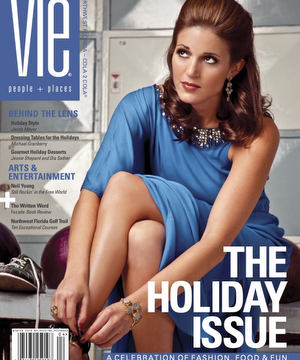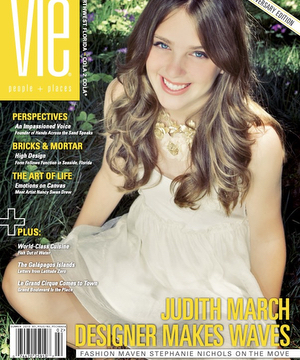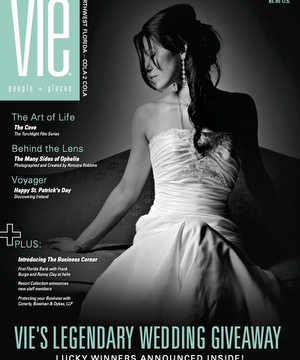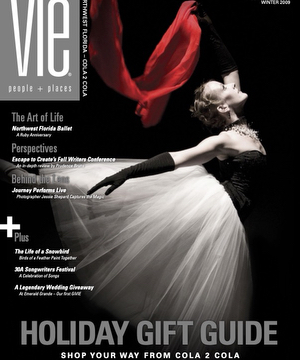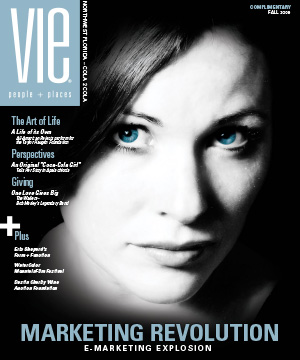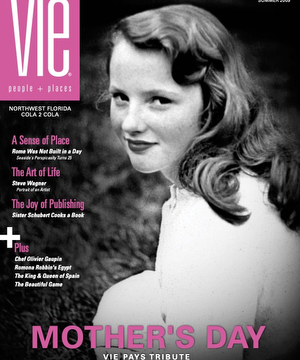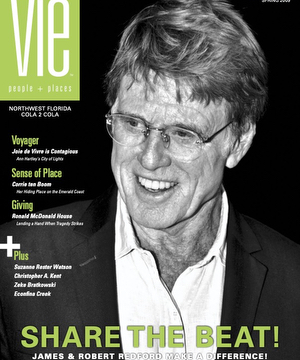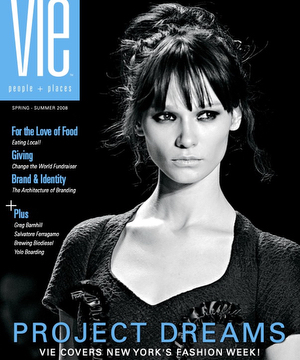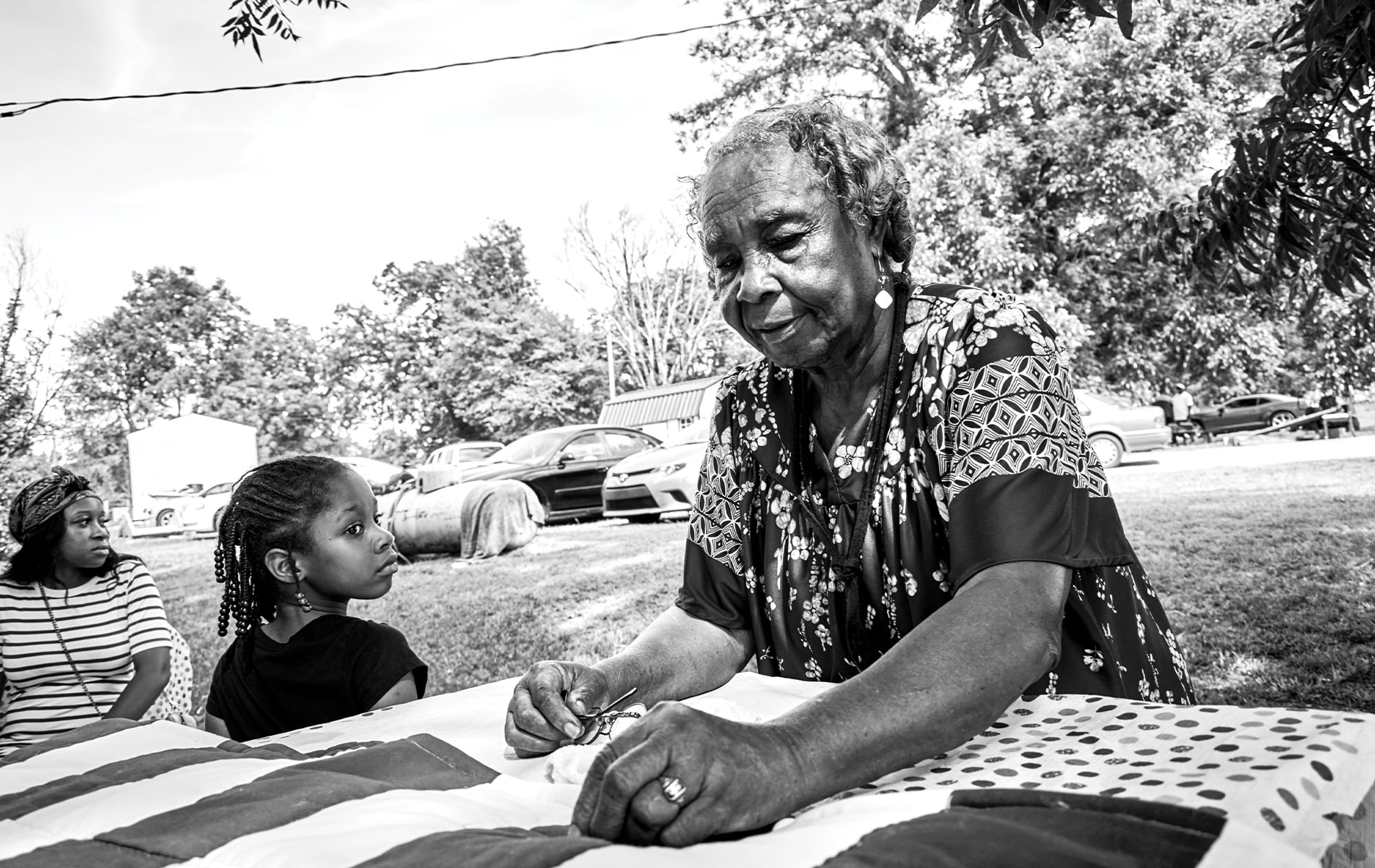
vie-magazine-gee-bend-quiltmakers-hero-min
Mary Lee Bendolph | Photo © Stephen Pitkin/Pitkin Studio
A Stitch in Time
The Gee’s Bend Quilt Makers
By Anthea Gerrie | Photography courtesy of Alison Jacques Gallery
They pieced together their quilts from scraps to keep their families warm and sold a few to put food on the table when cotton prices tumbled and left them destitute. Although they held “airing out” days when they hung up and admired each other’s work, they never thought of themselves as artists. Nevertheless, the stitchers of Gee’s Bend, Alabama, were rediscovered by a canny collector, praised to the skies by Jane Fonda, embraced by museum curators, and described in the New York Times as “the equals of Klee and Matisse.”
“Their creative urge to dream up designs while working in the fields and then go home and make something beautiful to take their minds off their hardship was amazing,” says writer Susan Goldman Rubin, who felt “haunted” by the quilts after seeing them at the Whitney Museum of American Art in a show that drew shining accolades from across the nation. “Their unusual and innovative colors and patterns were thrilling, full of freedom,” says the writer, whose book The Quilts of Gee’s Bend vividly tells the story of these women and their art.
- Stella Mae Pettway | Photo © Stephen Pitkin/Pitkin Studio
- Quilts on the fence in Boykin (Gee’s Bend), Alabama | Photo © Stephen Pitkin/Pitkin Studio
Now the work that has put the remote hamlet also known as Boykin on the map and secured a place in America’s most prestigious museums has reached London, where their first show in Europe was a near sell-out. Most of the thirteen quilts on display were acquired by European institutions keen to emulate MoMA, the Met, and other prestigious museums throughout the US that already have Gee’s Bend hangings in their collections.
This is a literal rags-to-riches story—the quilts were made by dirt-poor women, nearly all named Pettway for the owner of the plantation home of their slave ancestors; yet their works now command five-figure sums. The trickle-down effect has stopped short of making them rich, but fame has transformed the lives of many with basic necessities like indoor bathrooms and appliances. “Things have changed. I have gas; I have water; I have lights, a washing machine, a refrigerator, and a deep freezer,” says seventy-eight-year-old Loretta Pettway, one of the most legendary quilters, even though she admits, “I didn’t like to sew.” Only the need to keep her children warm changed the mind of the mother of seven who trudged so many miles a day in the cotton fields. As a child laborer, she came home too tired to join the family quilting effort.
The women of Gee’s Bend first attracted attention in the 1960s, when a Civil Rights–funded outfit, the Freedom Quilting Bee, was set up to supply Sears and Bloomingdale’s with Southern folk art. But the stitchers of Gee’s Bend, whose creativity attracted early collectors like Lee Krasner, the artist wife of Jackson Pollock, were ill suited to the task of neatly copying quilts designed by others from pattern books. Annie Mae Young, whose work first attracted the attention of the collector who put Gee’s Bend on the twenty-first-century world art map, was rejected for the unevenness of her stitches, and the women gradually returned to expressing their original visions.
- Two-sided quilt: Blocks and “One Patch” – stacked squares and rectangles variation, 1973 © Essie Bendolph Pettway / Artist Rights Society, New York and DACS, London
- Housetop, 1975 © Qunnie Pettway / Artist Rights Society, New York and DACS, London
- Big Wheel, 1986 © Stella Mae Pettway / Artist Rights Society, New York and DACS, London
- “Log Cabin” – single block “Courthouse Steps” variation (local name: “Bricklayer”), 1980 © Loretta Pettway / Artist Rights Society, New York and DACS, London
- “Crosscut Saw” – five diamond-pieces rows with bars, 1970 © Ethel Young
- Center Medallion, 1940 © America Irby / Artist Rights Society, New York and DACS, London
- “Housetop” – nine-block variation, 1930 © Annie E. Pettway / Artist Rights Society, New York and DACS, London
- Coat of Many Colors, 1970 © Candis Pettway
- “Diamonds” variation – “One Patch” with contrasting center, 1975 © Delia Bennett / Artist Rights Society, New York and DACS, London
One man who had heard of the Gee’s Bend women was Martin Luther King, Jr., who stopped there on his way to Selma in 1965 and told them, “I came over here to tell you, you are somebody.” But as ninety-year-old Nettie Young reflected forty years later, “Martin Luther King got us out of the cotton patch; the Arnetts got us out from under the bedsprings and onto the museum walls.”
She was referring to Bill Arnett, who brought the quilters to national prominence with the help of his son Matt, Jane Fonda’s one-time son-in-law. Arnett Sr. was an aficionado of African American art who went to Alabama in search of Annie Mae, inspired by a quilt he had seen in an art book. Surprised—she was unaware her work had been publicized—she dug it out, sold it to him, and sent him on to other Gee’s Bend stitchers. Arnett would meet 150 quilters by the time he brought their work to the attention of the Houston curator who predicted they would find a permanent place in American art history.
With baby steps, she started collecting scraps of her family’s worn-out clothes to make striking abstracts, like her denim work clothes quilt, replete with patch pockets, now hanging in London.
Sure enough, the 2002 show mounted by the Museum of Fine Arts, Houston, went on to be a sensation in twelve American cities, including Milwaukee, where the artists were greeted at the museum by Jane Fonda. The actress pronounced their work “full of love and patriotism and hope” in her speech introducing the stitchers to the city’s culture crowd.
Unlike traditional slave quilts, which often told a story or contained secret maps to indicate escape routes to freedom, the Gee’s Bend work reflects the modern lives of their makers. “Housetop” squares are inspired by the rafters they look up to from their beds. Other squares come from “work clothes,” a genre poignantly espoused by Missouri Pettway, who ripped shreds from her late husband’s clothes to make a quilt “to remember him and cover up under it for love.” Some of the women would sit under a tree and wait for inspiration; others said designs, which include dazzling displays of starbursts and diamonds, came to them in dreams.
The London show runs through February 6, 2021, at the Alison Jacques Gallery. It spans ninety years of craft, with highlights including a two-sided quilt made by fourth-generation quilter Essie Bendolph Pettway when she was twelve; Loretta Pettway’s Log Cabin, whose brightly colored strips recall the Ocean Park abstracts of Richard Diebenkorn; and the dazzling Pig in the Pen, an array of colorful squares stitched by Rita Mae Pettway in 2019. This dazzlingly modern work belies the fact the artist was seventy-eight when she made it. It is shown alongside the quilt made by her grandmother, Annie E. Pettway, in 1930, the oldest work in the show.
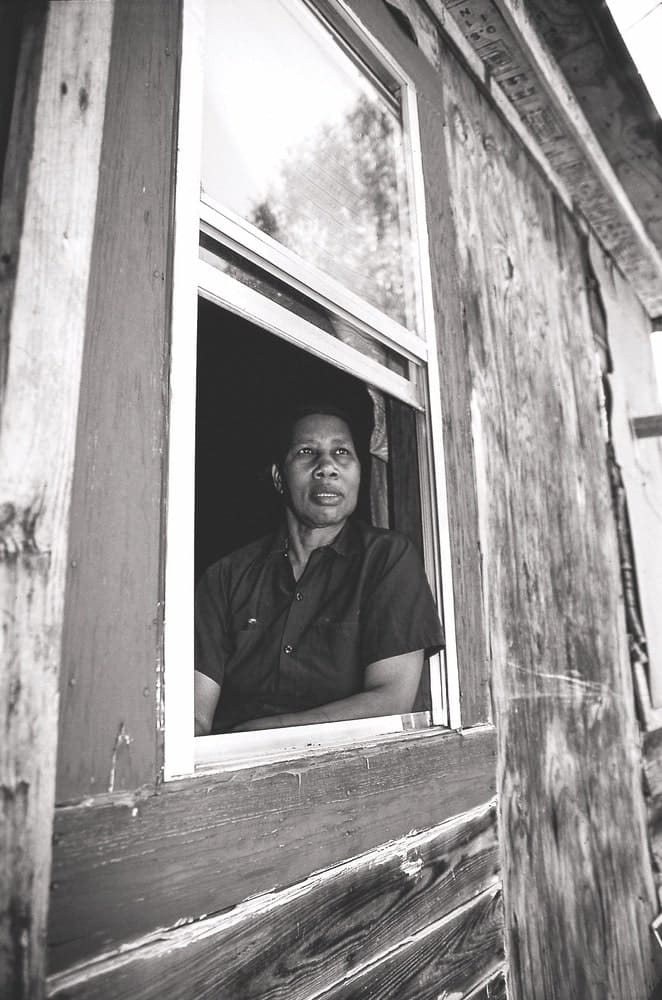
Loretta Pettway | Photo © Matt Arnett
At sixty years old, Loretta Pettway Bennett is the youngest of the exhibited artists. She confesses that her first quilt, started when she was thirteen or fourteen, was “lopsided and my mom finished it.” Removed from the community when she moved to Germany with her soldier husband, she was reintroduced to the pleasures of stitching alongside her mother, aunt, and grandmother when she moved back to Gee’s Bend while her husband was in officer candidate school. She had no aspirations to fame when she applied for a grant from the Alabama State Council on the Arts in 2001 to study the art of quilting from her mother; she merely had a desire to keep the tradition going when she saw it becoming a dying art. But the Houston art show one year later made her wonder, “Can I make a quilt that someday might hang on the wall of a museum?” With baby steps, she started collecting scraps of her family’s worn-out clothes to make striking abstracts, like her denim work clothes quilt, replete with patch pockets, now hanging in London.
Despite the fact that prices of up to $50,000 per quilt have been achieved in the new show, the Gee’s Bend community as a whole remains impoverished, according to Mary Margaret Pettway of the Souls Grown Deep Foundation. The organization was founded by Bill Arnett to research, preserve, and exhibit African American art. Mary Margaret, who once slept under quilts made by her mother, Lucy—which now hang in the Met and the Museum of Fine Arts, Boston—reflects sadly, “The traditions that have earned my community such acclaim have not resulted in economic advancement for the majority of quilters and their families. The average annual income here is under $10,000, and well over half the residents live in poverty.”
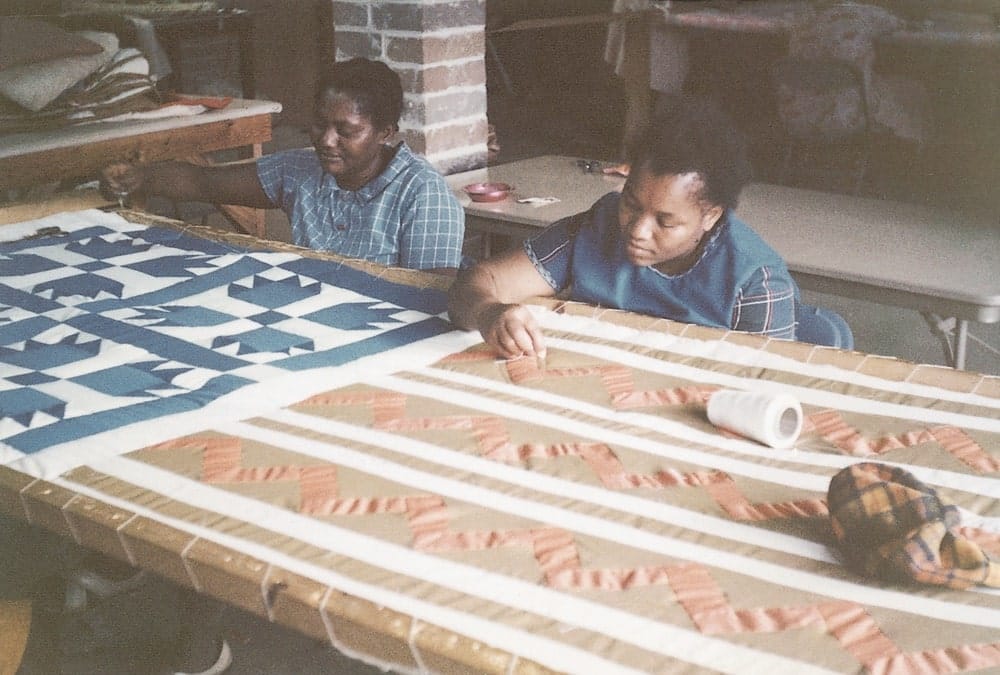
Leola Pettway and Qunnie Pettway working at the Freedom Quilting Bee, 1972 | Photo © Mary McCarthy
The foundation has mounted a fund-raising drive to train Gee’s Bend quilters how to market, brand, and sell their products and provide internet access for online trading. Some have already acquired the confidence to deal with galleries. “For our show, we worked directly with some of the artists as well as the foundation to source the quilts we exhibited,” says Hannah Robinson of the Alison Jacques Gallery in London.
Only in later life have the youngest artists, like Rita Mae’s daughter Louisiana Pettway Bendolph—who expanded into fine art prints exhibited alongside Andy Warhol’s at MOCA Jacksonville—come to recognize work born in hard times as a means of joyful creative expression. Hating stitching at age twelve, the fourth-generation quilter was called back to the art in middle age by the critical acclaim that made her realize she had inherited a very special talent. Now sixty, she says, “To me, I’m still just plain and simple Lou. I need to get used to ‘Louisiana Bendolph, the artist.’ But I’m proud of that. I really am.”
— V —
Visit AlisonJacquesGallery.com to learn more about the exhibition. The Quilts of Gee’s Bend by Susan Goldman Rubin is published by Abrams. Readers can also support Souls Grown Deep’s fund-raising drive at DonorBox.org/support-gee-s-bend-quilters.
Anthea Gerrie is based in the UK but travels the world in search of stories. Her special interests are architecture and design, culture, food, and drink, as well as the best places to visit in the world’s great playgrounds. She is a regular contributor to the Daily Mail, the Independent, and Blueprint.
Share This Story!
KEEP UP WITH THE LATEST STORIES FROM VIE
